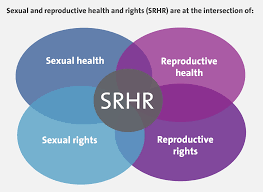ACCESS TRANSFORMATION
- Faith Hope Thipe

- Mar 16, 2022
- 3 min read
REMOVE BARRIERS TO ADOLESCENT'S & YOUNG PEOPLE'S (AYP) SEXUAL REPRODUCTIVE HEALTH & RIGHTS!
BY: Faith Thipe

Sexual and Reproductive Health is still over-medicalized and over-regulated. The role of service providers is to normalize these life-saving services and work with governments to remove unnecessary restrictions that are costing lives while advocating change. Comprehensive sex education is an important intermediary associated with adolescent and female Sexual Reproductive Health (SRH) outcomes. Increased education in adolescents and young women is not only associated with lower childbirth, but also promotes the diffusion of ideologies about childbirth, contraception, and the dissemination of ideas about the social status and values placed on women. It ultimately destroys the typical androcentric view of women as baby-making machines. Young women today are faced with heightened financial vulnerabilities, coupled with generally poor education and diminished social status.
Underuse of health services by young women, I have observed to be influenced by factors related to the underuse of health services, the first of which is the affordability of health systems to meet the needs of young women as well as their accessibility, and suitability. The second is social mobility: lack of financial resources, user restrictions such as increasing demands on young women's time, and information asymmetry in health information

between women and men. I forgot to mention the important point, but institutional factors such as male decision-making power, medical budget and facility management, awareness of the local illness, prejudice, and discrimination in medical care (patriarchal power). The imbalances observed in accessing resources lead to a cycle of disadvantages at the individual level. Less exposure to a favourable population is likely to occur leading to a low possibility of access to health management, and poor health. Young people and adolescents, including minority people, are least and difficult to reach with existing health infrastructure as they are often faced with various legal, social, and cultural barriers to access SRH services. A group of sensitivity groups, languages, cultural settings, health service availability recognition, and provider settings for access to service access make it impossible or hard if available.

WHAT SHOULD BE DONE?
Therefore, this calls for partnerships of the government and civil societies to support policy, law, regulation, financing and changes on SRHR programming. These should include improvements to young people`s eligibility for contraception and the inclusion of adolescent sexual and reproductive health and rights in the nation`s strategic sexual and reproductive health plan. The varying levels of inequality present in a population have an important impact on SRH outcomes. Differences in control over and access resources determine both physical and financial access to sexual health services. Performance dynamics also affect the quality of clinical care that clients receive.
In addition, an individual's health behaviour is often influenced by norms related to social status, ethnicity, and gender. At the structural level, the socio-economic and political environment interacts with a person's social class, gender, ethnicity, and income. Intermediate health determinants include behavioural, biological, and psychosocial factors, as well as factors that can directly affect biological exposure and vulnerabilities, such as living and working conditions. The health inequality observed in the population is caused by complex relationships between social determinants and is mutually enhanced through multiple feedback channels.

While the challenge is significant, progress can be made in SRH with increased attention to the social determinants. There are a growing number of programmes that can be successful at designing interventions that address social determinants and contribute to improved SRH. Programmes that will be successful are those that will take a targeted approach such as fostering adolescents, young people, and community participation, encouraging governments to support more equitable policies, and improving data collection to better understand health disparities. To meet the objectives, greater attention must be paid to inequities and the social and economic structures that contribute to them.








Comments